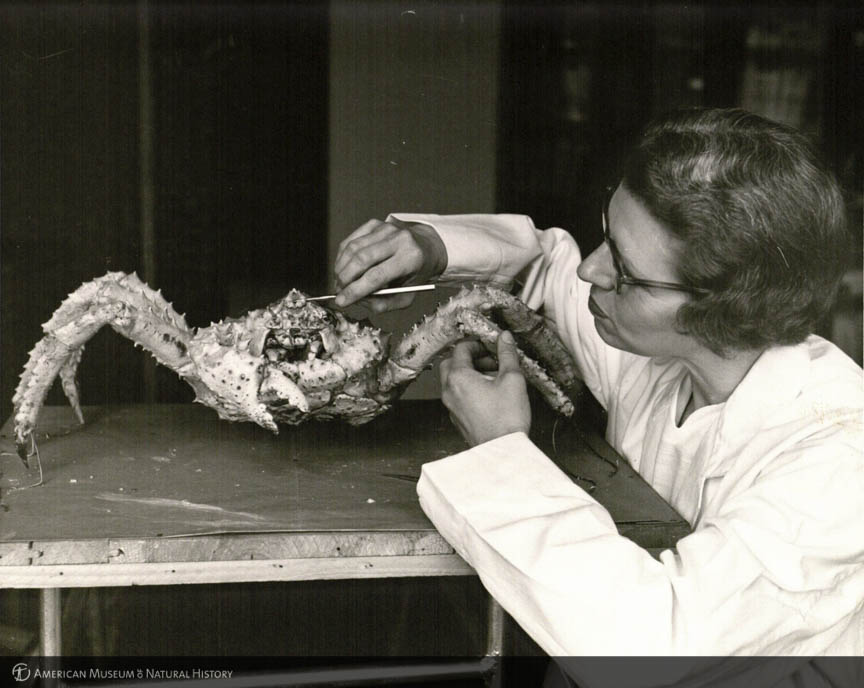


Scroll down to discover...

Live the life of a crab! Attempt to maintain your salinity level and collect food.
Play it!

Dr. Dorothy E. Bliss (1916-1987) broke ground in the field of carcinology, making discoveries and writing scientific journals on her findings. She made great strides in the field of crustacean hormone control. She also focused her research on the salt and water balance of the crabs. In addition to teaching at Albert Einstein College Medicine, City University of New York, University of Rhode Island, and Radcliffe College, Dr. Bliss also worked at the American Natural History Museum in New York City starting her career as an Assistant Curator and eventually getting the position of Emerita Curator. Though she was successful in her career, her story is often not heard. As part of the "Hack the Deep" hackathon at the AMNH, her story and history will be presented
A manifestation of Dr Bliss’s impact of others takes place in Dorothy Skinner’s paper, Proteins of the Crustacean Exoskeleton, in which she dedicates the paper to Dr Bliss. Dr Bliss’s research proved essential to many further discoveries in the crustacean field – Skinner describes Dr Bliss as having done all of the prerequisite work required to conduct further experiments on land crabs, including figuring out the ideal environment for the crab to survive. Skinner says that Dr Bliss really had a “feeling for the organism”, the organism being the blackback land crab, and her research would not have been possible without Dr Bliss. Examples like these illustrate the extent to which Dr Bliss paved the way in crustacean research, and opened doors for others despite obstacles presented by the time period she lived in.
During her lifetime, Bliss faced the challenges of many women during her time period – perhaps even more challenges because science was and still is such a male dominated field. Although she went to two very good colleges, Radcliffe (Harvard’s then sister school) and Pembroke (now Brown University), she still encountered challenges. Specifically during her education, although Radcliffe was an amazing institution, many of its alumni have spoken out and said that it was obvious the majority of funds and resources were directed towards the all-male Harvard, and Radcliffe did not get many resources. The women described the Radcliffe experience as one of marginalization and patronization by lofty, snobby, others.